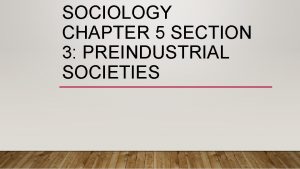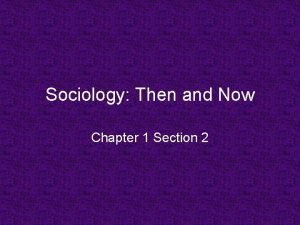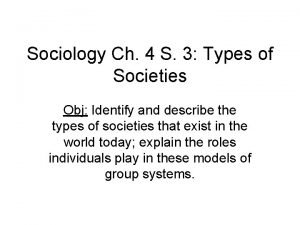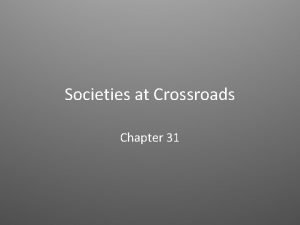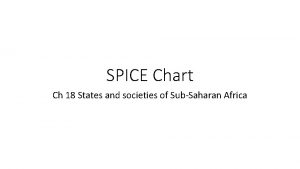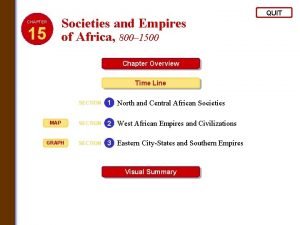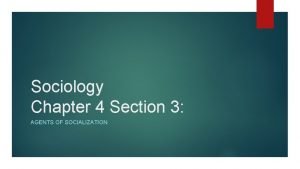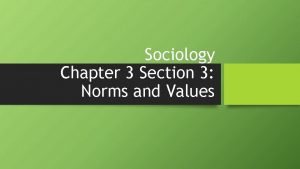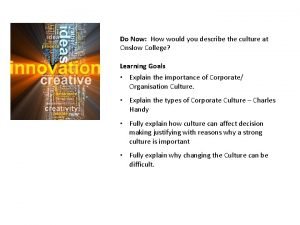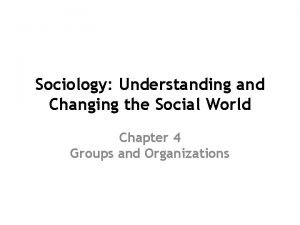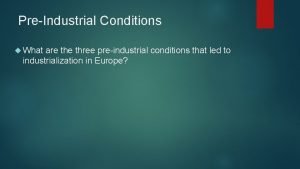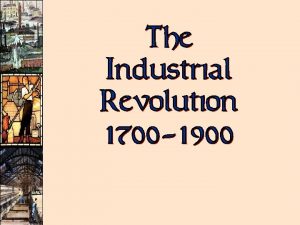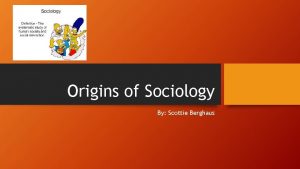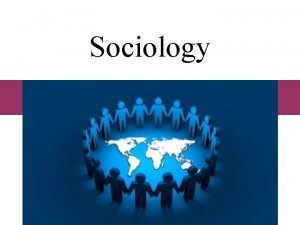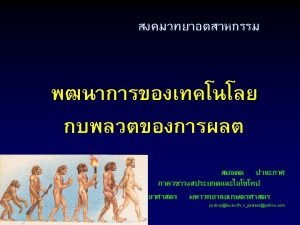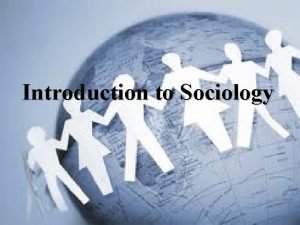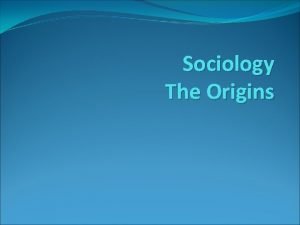SOCIOLOGY CHAPTER 5 SECTION 3 PREINDUSTRIAL SOCIETIES TYPES












- Slides: 12

SOCIOLOGY CHAPTER 5 SECTION 3: PREINDUSTRIAL SOCIETIES

TYPES OF SOCIETY • The culture and social structure of a society are greatly affected by the way the society provides for basic needs. • A society is composed of people living within defined territorial borders who share a common culture.

• Societies meet their members’ basic needs in different ways. • These differences from the basis of a system anthropologists often use to classify societies. • In this system, societies are classified as preindustrial, or post industrial.

HUNTING AND GATHERING SOCIETIES • Survives by hunting animals and gathering edible foods such as wild fruits and vegetables. • Usually nomadic and have few possessions. • Groups tend to be small, usually around 50 people. • Economic relationships within hunting and gathering societies are based on cooperation- members share what they have with other members.

• Generosity and hospitality are valued. • Because the obligation to share goods is one of the most binding aspects of their culture, members of hunting and gathering societies have little or no conception of private property or ownership. • The division of labor in hunting and gathering societies is limited to the sex and age distinctions found in most families, since the family is the only institution. • Men and women are assigned separate tasks, and certain tasks are given to the old, the young, and young adults.

HORTICULTURAL SOCIETIES • Grows plants. • Came into being about ten to twelve thousand years ago. • The gradual change from hunting and gathering to horticultural societies occurred over several centuries. • The relative stability permitted the growth of metacommunity societies averaging 1, 000 to 2, 000 people each.

• With the labor necessary for survival, households depend more on themselves and less on others outside the family unit for their subsistence.

PASTORAL SOCIETIES • Food is obtained primarily by raising and taking care or animals. • These are herd animals such as cattle, camels, goats, and sheep, all of which provide both milk and meat. • Since grains are needed to feed the animals, pastoralists must also either farm or trade with people who so.

• Because both horticultural and pastoral societies can produce a surplus of food, they usher in important social changes unknown in hunting and gathering societies. • With a surplus food supply, some members of the community are free to create a more complex division of labor. • People can become pollical and religious leaders or make goods such as pottery, spears, and clothing.

• The creation of a surplus also permits the development of social inequality, although it is limited.

AGRICULTURAL SOCIEITIES • Subsists by growing food. • The difference is that agricultural societies use plows and animals. • The transition from horticultural to agricultural society was made possible largely through the invention of the plow. • Using animals also increases productivity, because larger areas can be cultivated with fewer people. • As a result, more people are free to engage in noneconomic activities.

• Cities can be built and occupations appear that re not directly tied to farming, such as politician, blacksmith, and hat maker.
 Describe preindustrial societies of horticulturalists
Describe preindustrial societies of horticulturalists Sociology: then and now
Sociology: then and now Pastoral society characteristics
Pastoral society characteristics Chapter 31 societies at crossroads
Chapter 31 societies at crossroads Great zimbabwe spice chart
Great zimbabwe spice chart Chapter 15 societies and empires of africa
Chapter 15 societies and empires of africa 3 agents of socialization
3 agents of socialization What is sociology section 3
What is sociology section 3 Primary group
Primary group Types of social groups in sociology
Types of social groups in sociology Types of culture in sociology
Types of culture in sociology Social group examples
Social group examples Chapter 10 meiosis 1 and meiosis 2
Chapter 10 meiosis 1 and meiosis 2
